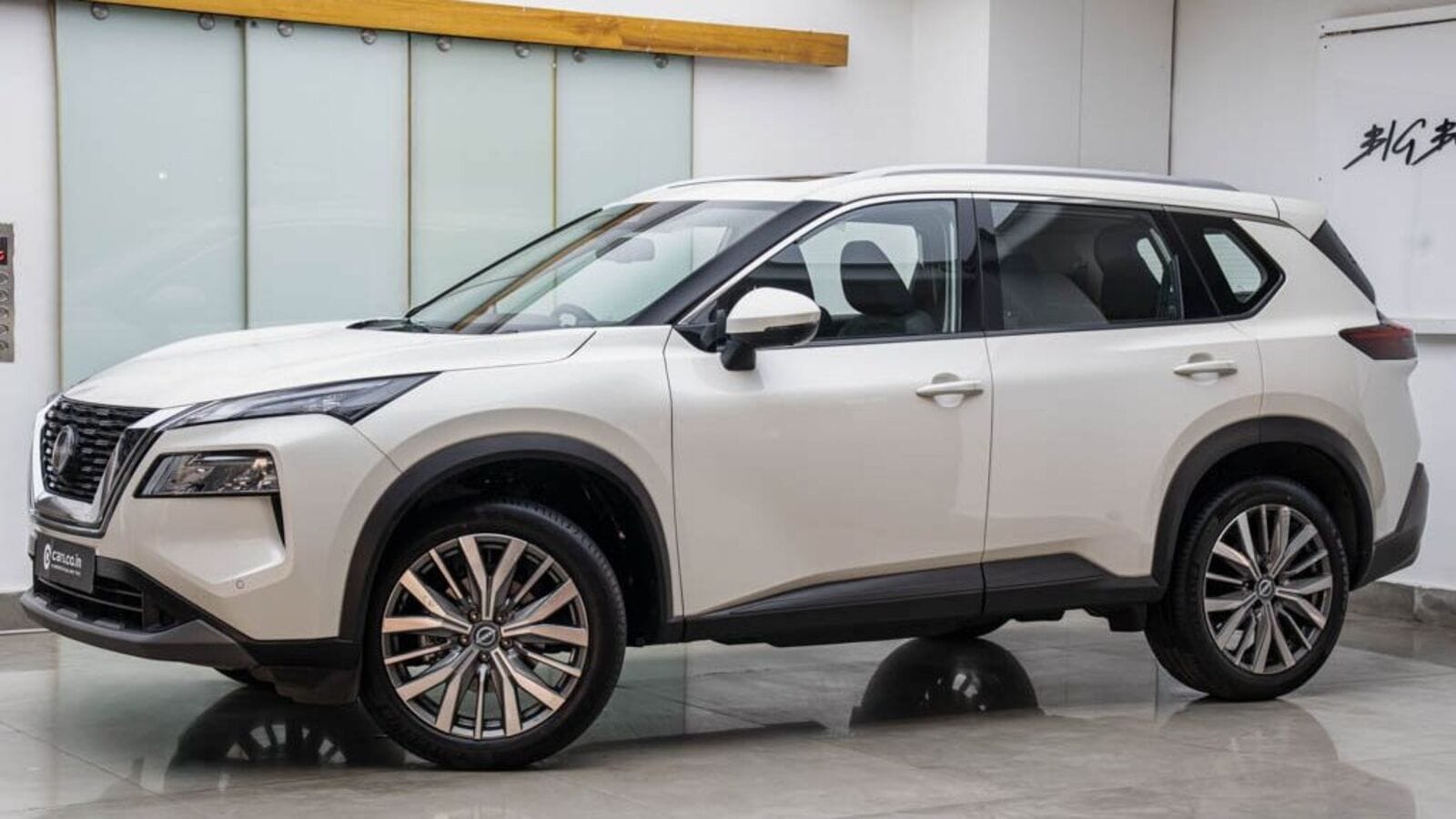01 May 2025

Residual values (RVs) of 36-month-old cars at 60,000km, presented as a percentage of original list price (%RV), fell in April. But which countries and powertrains suffered the biggest drops? Autovista24 journalist Tom Hooker analyses the figures with Autovista Group experts.
On average, %RVs saw year-on-year declines in Austria, Germany, Italy, Spain, Switzerland and the UK. Alongside France, these markets also saw values fall compared with March.
Italy suffered the steepest year-on-year %RV decline, dropping 4.6 percentage points (pp) to 48.4%. This was down from its 48.8% market average recorded in March. Meanwhile, Austria saw its lowest %RV since December 2024, at 47.7%. Compared with April 2024, %RVs dropped by 4.1pp and 0.6pp from March.
Average trade values in Switzerland slumped 4pp year on year to 43.7%. This was down from an average of 44.1% in March. Spain endured a 2.8pp fall in %RVs compared to April 2024 and a 0.5pp month-on-month drop. France also saw values decrease by 0.5pp compared with March.
Elsewhere, the UK suffered its lowest %RV performance since August 2024. It went from an average trade value of 51.7% in April 2024 to 50.7%, marking a 1pp decline from one year ago.
Germany saw comparative stability, with little month-on-month change. However, the country %RVs fell by 2.6pp compared to April 2024.
PHEV values plummet
Compared with 12 months ago, trade values of plug-in hybrids (PHEVs) struggled in Europe. It was the worst-performing powertrain in Italy, Spain and the UK, with drops of 7.5pp, 4pp and 0.8pp respectively.
Conversely, battery-electric vehicles (BEVs) saw roughly average performances compared with other powertrains. In the UK, BEVs recorded a 1.3pp %RV growth compared to April 2024. This was the best result across all the technologies in the six markets assessed. However, in Switzerland, the powertrain suffered the worst year-on-year fall of any powertrain, at 5.8pp.
Meanwhile, full hybrids (HEVs) saw values decrease by 2.1pp and 2.6pp in Spain and Switzerland respectively. Alongside diesel, the powertrain performed well in Italy, posting a 3.9pp fall, while the overall used-car market dropped by 4.6pp.
Diesel was the best-performing powertrain in Germany and Austria, with respective declines of 1.8pp and 2.4pp declines. Petrol followed the average market trend in the six countries observed. However, in Austria, it faced the biggest decline of any fuel type, at 5.2pp.
Increasing demand in Austria
‘Following a slight decrease in March, the sales-volume index (SVI) in Austria increased slightly in April. The number of observed sales increased by 4.3% compared to the previous month. This was a year-on-year decline of 6.9%,’ outlined Robert Madas, Autovista Group’s regional head of valuations.
Meanwhile, the active-market volume index (AMVI) of two-to-four-year-old passenger cars remained stable. However, the supply volume of passenger cars in this age bracket fell by 3.6% compared to the previous year.
At 66 days, the average amount of time needed to sell a used car decreased again in April. This was around 2.6 days faster than in March.
Diesel vehicles continued to be the fastest-selling powertrain, taking 59.4 days to sell on average last month. This was followed by HEVs at 60.7 days, PHEVs at 70.2 days and petrol vehicles at 70.5 days. BEVs took the longest amount of time to sell at 73.1 days.
%RVs decreased to 47.7% on average in April. This was a 0.6pp decrease compared to March and a 4.1pp decrease year-on-year.
HEVs retained the greatest amount of trade value in January at 51.3%, followed by petrol cars at 49.2%. Then came diesel models with 48%, and PHEVs with 46.4%. BEVs again retained the lowest amount of value, at 41.3%. This was a 2.7pp drop compared to March, so the improving trend from the previous months stopped in April.
‘%RVs are expected to decrease in the coming years but at a slower pace. This is due to weakening demand and unwavering supply. By the end of 2025, %RVs are expected to decrease by 0.7%. In 2026, a slight year-on-year drop of 0.7% is also expected,’ stated Madas.
Stable values in France
In France, absolute RVs remained stable for petrol and diesel models in April, compared with March. Meanwhile, HEVs and PHEVs recorded a slight RV increase. Smaller and cheaper cars were the quickest to sell during the month.
%RVs for petrol-powered cars were relatively stable in April. The powertrain was more attractive to used-car customers this month. Compared to March, the fuel type took 4.2 fewer days to sell on average.
‘The petrol vehicle market was quite stable until December last year. Values then fluctuated at the beginning of this year to find a stabilisation again,’ explained Ludovic Percier, Autovista Group’s senior RV analyst for France.
%RVs of diesel-powered cars were stable in April after successive months of marginal increases. This counterbalanced the decrease the fuel type experienced until December 2024.
‘There is still demand for diesel models on the used-car market. However, there are smaller volumes and model ranges on offer compared to previous years. Diesel cars are among the fastest-selling powertrains with HEVs, evidencing how much demand they are in,’ highlighted Percier.
Overall HEV %RVs fell this month due to more expensive vehicles being sold. However, the technology remains the fastest in terms of selling times. HEVs are still appreciated in France, so %RVs have remained stable overall.
‘Currently, the technology strikes an appealing balance between petrol and diesel vehicles and BEVs. One of its major advantages is that, unlike BEVs and PHEVs, there is no need to charge the car. Furthermore, some HEVs are becoming more affordable,’ noted Percier.
Suffering PHEVs
PHEVs suffered from a significant decrease in value last year and remain the second slowest-selling powertrain in France. The technology has seen an oversupply on the used-car market caused by fleet buyers on the new-car market.
‘This month, PHEV values decreased slightly. However, the introduction of newer models with better electric-only ranges and more premium models has helped keep RVs roughly stable,’ said Percier.
While values did increase compared with the first three months of the year, figures have only returned to the levels recorded at the end of last year. List prices on the new-car market remain high, explaining the powertrain’s larger value loss.
BEVs not only spent the longest amount of time in stock but also recorded the lowest RVs. Values have fallen considerably in previous months. Despite marginal increases in January and February, April RVs dropped by 0.8pp compared to March.
The technology appears to be stagnating, as brands are pushed by governments to sell an increasing number of new BEVs. This means the used-car market is becoming crowded with models but still has too few buyers. While Tesla enjoyed some of the fastest selling times on the used-car market, other brands struggled to find customers.
‘As of December 2023, BEV purchase incentives became dependent on lifetime carbon emissions. This meant some brands and models were no longer eligible. Therefore, used models are still too expensive, causing prices to drop month after month,’ he commented.
Where demand does not meet supply, the market sees a strong RV drop and lower prices. Overall, small cars are the fastest sellers, including the affordable Toyota Aygo and Dacia Duster.
Germany’s surging SVI
Following a significant decrease in March, the SVI in Germany showed a steep month-on-month increase in April, up 22.7%. However, the metric was down 21.2% year-on-year.
‘Meanwhile, the AMVI of two-to-four-year-old passenger cars remained rather stable compared to March with a slight decrease of 3.1%. The supply volume of passenger cars in this age bracket dropped by almost 12% compared to the previous year,’ stated Madas.
The average number of days needed to sell a used car increased to 64.4 days in April. PHEV models sold the fastest at 60.3 days, followed closely by diesel cars at 60.6 days. Then came BEVs at 61.6 days, followed by petrol cars after 67.9 days and HEVs after 72.2 days.
‘%RVs of 36-month-old cars at 60,000km remained stable in April. Models held an average %RV of 47.6%. Petrol cars led the market with a %RV of 49.2%. Then came HEVs at 49.4% and diesel cars at 48.6%, followed by PHEVs at 42.7%. BEVs again retained the lowest level of value at 37.3%,’ he outlined.
Although RVs have stabilised recently, demand remains rather weak. Therefore, RVs can be expected to remain under pressure. In 2025, %RVs are forecast to decrease, down 2.6% when compared with December 2024. Pressure will probably ease in 2026, and RVs are forecasted to decline by 1.4%.
Italy’s unsurprising values
‘There were no surprising residual value trends in Italy during April. Compared to one year ago, %RVs declined sharply by 4.6pp. There was also a 0.4pp drop from last month, a clear sign that so far there has been no reversal of the downward trend,’ highlighted Marco Pasquetti, Autovista Group’s head of valuations for Italy.
Current list prices are very close to April 2024 and have only decreased by €125. However, compared to 12 months ago, absolute RVs fell from €20,766 to €18,897 on average. This equated to a drop of almost €2,000.
Despite recording a year-on-year %RV decline of 1.9pp, liquefied petroleum gas (LPG) vehicles remained stable compared to last month. The powertrain retained 47.5% of its original list price value in April.
‘It is well known that Italy is one of the main markets for this fuel type. Sales in the new market also confirm a strong appreciation of the powertrain. LPG vehicles accounted for 9.2% of overall registrations in the first quarter of the year, not far away from diesel’s 10% share,’ said Pasquetti.
The worst performers compared to April 2024 were PHEVs and BEVs, with %RVs falling by 7.5pp and 5.4pp respectively. Currently, a used BEV retains 30.4% of its list price after 36 months and 60,000km.
The overall RV outlook for 2025 is down 7.2% compared to December 2024. However, there is still a high level of uncertainty related to the introduction of tariffs and related countermeasures. This could affect used-car values to some extent. It will be crucial to constantly observe the development of the used-car market.
Spain’s passenger car growth
The Spanish new-car market continues to show great strength. Registrations continue to grow significantly across all channels. In March, a year-on-year growth of 23.2% was achieved. Meanwhile, the market improved by 14.1% in the first quarter.
‘As in previous months, part of this growth in private sales corresponds to the special Reinicia Auto+ plan for those affected by the DANA floods in Valencia. Excluding these special sales, the monthly growth would be 18%, which is still significant,’ commented Ana Azofra, Autovista Group’s head of valuations and insights, Spain.
In addition to this new-car market positivity, there is a notable increase in sales of electric vehicles. Plug-in deliveries increased by 68.8% in March and took a 14.1% market share. Projections are also positive for the coming months.
‘The used-car market is also experiencing growth, with an accumulated boost of 8% across the first three months of the year. As expected, the presence of EVs has also increased among used car transactions. Plug-in stock is currently increasing, facilitated by a negative adjustment in their average transaction prices,’ she noted.
In April, a three-year-old BEV with 60,000km sold for €21,362 on average. This equated to a drop of €601 compared to March and almost €1,600 less than a year ago.
However, the mix of models for sale is also changing with the introduction of new players in the market. The remaining powertrains continue to show great stability. Finally, the three fastest-selling used models this month were the Lynk & Co 01, Mazda CX-30, and Toyota CH-R.
Improving demand in Switzerland
Following a decrease in March, the SVI increased in Switzerland in April. The number of sales observed increased by 2.1% compared to the previous month. Year-on-year, the SVI was up by 7.6%.
‘Meanwhile, the AMVI of two-to-four-year-old passenger cars decreased slightly by 1% in April compared to March. However, the supply volume of passenger cars in this age bracket slumped by 10% compared to the previous year,’ explained Madas.
RVs of 36-month-old cars at 60,000km dropped slightly in April. Meanwhile, %RVs fell to 43.7% in April from 44.1% in March. However, the year-on-year drop was more severe, down 4pp from the values recorded 12 months ago.
HEVs retained the most value in April by far at 49%. Then came petrol cars at 45.2%, diesel models at 42.2% and PHEVs at 41%. BEVs were once again the worst-performing powertrain. All-electric cars retained only 38.2% of their original list price after three years and 60,000km.
April saw two-to-four-year-old passenger cars sell quicker than in March. These vehicles spent 75.2 days in stock on average.
‘Petrol cars sold fastest at 71.4 days, followed by HEVs at 73.7 days, diesel cars at 74.6 days and PHEVs at 83.1 days. Meanwhile, BEVs needed the most time to sell at 85.8 days on average. However, this was an improvement compared to the previous month when the technology took 11.5 days longer to sell on average,’ he stated.
A trend of relatively stable supply and low demand will continue as various uncertainties shroud 2025. Therefore, %RVs are expected to decrease in the coming years, but at a slower pace. By the end of 2025, %RVs are expected to decrease by 3.5% compared to December 2024. In 2026, a lower year-on-year drop of 1.5% is expected.
Rising supply in the UK
‘In April, the used-car market in the UK was reasonably stable. The average three-year-old car retained 50.7% of its original new price. This marked a slight decrease of 0.5pp from March. Compared to April 2024, the average %RV fell by one percentage point,’ said Jayson Whittington, Autovista Group’s regional head of valuations, UK.
Interestingly, the AMVI increased by 7.8% compared to the previous month. Despite this rise in advertisements, the SVI revealed a 2.8% decline in sales from March.
‘One positive trend was the reduced average number of days it took dealers to sell a used car. This figure fell by 6.4 days, bringing the average down to 34.4 days. This quicker turnover implies that, although fewer cars were sold, dealers were able to sell them more quickly. This was likely due to an improved mix of vehicles on offer,’ he noted.
The market for BEVs showed mixed results. BEV %RVs fell by 0.6pp from the previous month. However, compared to April 2024, this was an increase of 1.3pp. Additionally, there was a 6% increase in BEV sales compared with March. There was also a 1.2% rise in the number of BEVs advertised for sale.
Clearly, used-car stock is on the rise. It will be interesting to see if March’s plate change generated a significant increase as fresh stock begins to work its way through wholesale channels and onto dealer forecourts.





